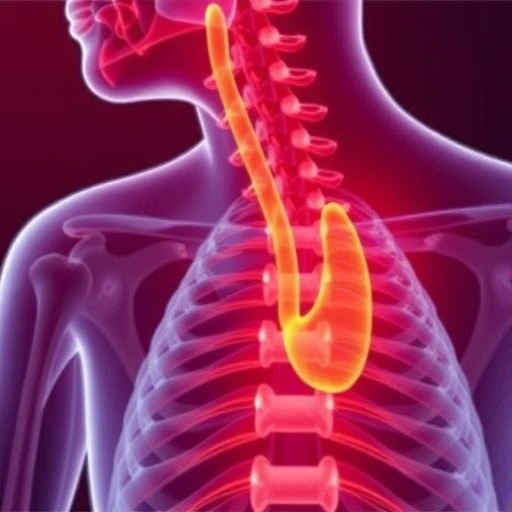
Credit: UC Regents 2017
The federal Supplemental Nutrition Assistance Program (SNAP) — formerly known as "food stamps" — that helps low-income individuals and families purchase food is less likely to be used by farmworkers eligible for the benefit who are immigrants, Hispanic, male, childless or residing in California, new research from UC Davis health economists shows.
Published in the "Journal of Immigrant and Minority Health," the study undercuts the common assumption that immigrant crop workers, especially Hispanic crop workers, utilize SNAP more than others. It also highlights the need to address nonparticipation among those who are legally eligible and could benefit from the program, which reduces hunger and stimulates spending.
"The worldwide financial crisis in the last decade definitely increased SNAP use among agricultural workers, which wasn't surprising since SNAP participation historically fluctuates in tandem with poverty levels," said lead author Paul Leigh, a professor with the Department of Public Health Sciences and Center for Healthcare Policy and Research at UC Davis.
"We did not see a disproportionate increase in SNAP use among immigrants — documented or undocumented — who are often the hardest hit by economic downturns," Leigh said. "The greatest percentage point increase was among citizens."
A program of the U.S. Department of Agriculture, SNAP offers funding for food or plants and seeds to grow food based on eligibility criteria such as income and family size. Undocumented immigrants may qualify if they have U.S. born children, and documented immigrants may qualify after residing in the U.S. for five years.
An evaluation of comprehensive data on farmworker households
Leigh, together with co-author Alvaro Medel-Herrero of the UC Davis Center for Health and the Environment, wanted to develop a clear picture of SNAP participation among U.S. farmworkers, focusing on the recession years following the financial crisis of 2007-2008.
They analyzed data from 2003 through 2012 on adult respondents in about 18,000 households included in the National Agricultural Workers Survey of the U.S. Department of Labor, which contains demographic, employment, immigration and health information on crop workers, including their SNAP use or nonuse. The dataset is rare, according to Leigh, because it contains information on undocumented immigrants.
Respondents were divided for comparisons into three groups: citizens, documented immigrants and undocumented immigrants. Immigrants in the study were nearly all Hispanic, however citizens were also grouped by ethnicity: non-Hispanic white, Hispanic and other.
More people participated in SNAP, mostly citizens
The results showed that SNAP participation among U.S. farmworkers increased from 4.9 percent in 2008 to 18.7 percent in 2012 (13.8 percentage points), reversing a downward participation trend during the previous six years as the economy expanded. The number of farmworker households under the poverty line also increased, from 15 percent in 2008 to 24 percent (9 percentage points) in 2012.
In terms of farmworkers' citizenship status, the greatest increase in SNAP participation was among citizens — from 9.5 percent to 26.9 percent (17.4 percentage points). The second highest increase was among undocumented immigrants, which went from 3.9 percent to 16.4 percent (12.5 percentage points). SNAP participation among documented immigrants rose from 6.3 percent to 7.2 percent (0.9 percentage points).?
Immigrants were less likely to use SNAP
From 2003 through 2012, documented and undocumented farmworker immigrants were 40 percent and 43 percent less likely to participate in SNAP than households headed by non-Hispanic white citizens with the same need, as determined by poverty level and number of children.
Hispanic citizens were less likely to use SNAP
Also for 2003 through 2012, the researchers found that farmworkers who were Hispanic citizens were 30 percent less likely to participate in SNAP than non-Hispanic white citizens with the same poverty status and number of children.
SNAP utilization was higher for the poorest, parents and women
The researchers found that, regardless of race or ethnicity, household poverty level and the number and ages of children in the household were among the most powerful predictors of farmworker participation in SNAP. Female heads-of-household also were 43 percent more likely to participate in the program than male heads-of-household.
California lags in SNAP enrollment
Finally, holding constant household poverty status and numbers of children, farmworkers who were residents of California were least likely to participate in SNAP, while residents of the Northwest were most likely to participate when compared with the East, Southeast, Midwest and Southwest. California has traditionally had lower SNAP enrollment than the rest of the nation, based on enrollment potential, possibly due to burdens associated with the application process, fear of deportation or lack of familiarity with the program.
The researchers hope their study helps secure the future of SNAP, which was expanded following the economic crisis but is currently being considered for sharp cuts. They also hope additional research identifies ways to address barriers to utilizing SNAP among eligible nonusers.
"Farmworkers and their families advance our agricultural economy and put food on all of our tables, and they have a right to eat as well," said Medel-Herrero. "Assuring that SNAP is both available and accessible to them benefits all of us."
###
The study, titled "Changing SNAP-Participation Trends Among Farmworker Households in the U.S., 2003-2012," was partially funded by the National Institute for Occupational Safety and Health (grant 2U54OH007550-11). It is available online at http://rdcu.be/tkGw.
More information about UC Davis Health, including its Department of Public Health Sciences and Center for Healthcare Policy and Research, is at http://www.ucdmc.ucdavis.edu/welcome/index.html. More information about the UC Davis Center for Health and the Environment is at http://che.ucdavis.edu/about.
Media Contact
Karen Finney
[email protected]
916-734-9064
@UCDavisHealth
http://www.ucdmc.ucdavis.edu
Original Source
http://www.ucdmc.ucdavis.edu/publish/news/newsroom/12073 http://dx.doi.org/10.1007/s10903-017-0600-x
############
Story Source: Materials provided by Scienmag




